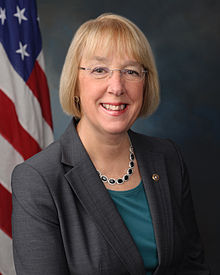Here’s what’s happening

Money Left On The Table and FAFSA!
Senator Patty Murray (Washington) encourages students to complete their Free Application for Federal Student Aid (FAFSA).
In 2017, Washington left over $50 million in federal student financial aid on the table. We can trace these unused resources back to low rates of students applying for financial aid. Only 54 percent of seniors in the graduating class of 2017 completed the FAFSA (Free Application for Federal Student Aid).
FAFSA completion has emerged as a significant opportunity gap for College Bound Scholarship seniors. Statewide, almost half—46 percent—did not complete a FAFSA in 2017. These students were all eligible but did not receive the College Bound Scholarship, because they did not complete the FAFSA. They also missed out on the $50 million in Pell Grants that we left on the table.
Low FAFSA completion rates lead to short- and long-term deficits across our state. In the short-term, 1 in 3 counties missed out on $1–5 million in federal aid for their students’ postsecondary education. In the long-term, this opportunity gap shortchanges the state’s ability to meet educational attainment goals that align with workforce demand.
Good, living-wage jobs in Washington require some kind of education or training after high school. In the next five years, over 70 percent of jobs in our state will require a credential or degree. But currently, only 56 percent of Washingtonians ages 25–44 have finished an education or training program after high school.
To meet workforce demand—and ensure Washingtonians have the skills to compete for good jobs—vocational schools, colleges, and universities must serve more students. These students will need to come from populations who are underrepresented in higher education, particularly students of color and low-income students. Many of these students cannot attend postsecondary education without need-based financial aid. In this light, FAFSA completion is a glaring barrier and opportunity gap in our state.
There are proven ways to help students overcome the barrier of applying for financial aid. Tennessee and Louisiana have implemented these strategies statewide and their FAFSA completion rates, the highest in the country, reflect their efforts. We have also found examples of effective strategies closer to home in Everett, Spokane, and Klickitat.
Our new issue brief, Increasing financial aid applications pays off in student success, highlights the work these schools are doing and how it’s paying off for them and their students.

